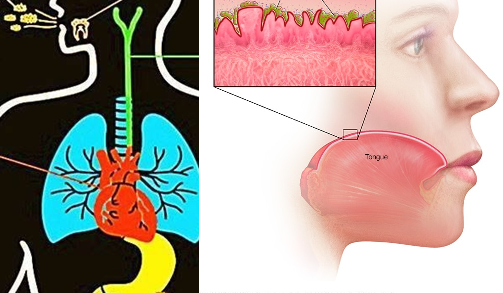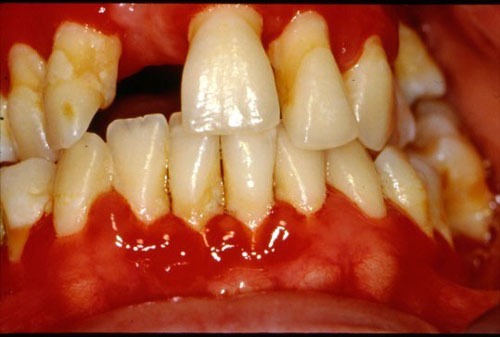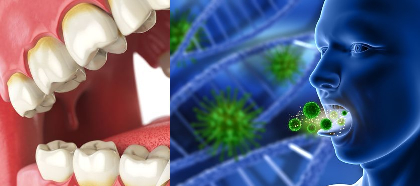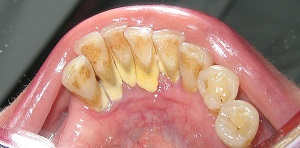Bad breath is clinically known as halitosis. Halitosis is an oral health condition that affects the oral hygiene of humans, and it is mostly experienced as mouth odour i.e. the release of foul smell from the buccal cavity (mouth). The phrase “halitosis” is derived from the Latin word “halitus” which means breath and the Greek word “osis” which means an abnormal condition. Bad breath is clinically characterized by the consistent release of bad or foul smell from the mouth. Poor dental hygiene predisposes the individual to several health complications and diseases including halitosis (Table 1).
The fear of bad breath is called halitophobia. When people can conveniently smell your breath or perceive foul smell from your mouth in the course of conservation then you have halitosis. Microorganisms are ubiquitous, found everywhere and even in the mouth where they play various biological roles. The normal flora of the human mouth consists mainly of bacteria and yeast such as Candida species. Bacteria are the most dominant microorganisms that inhabit or colonize the mouth.
Examples of bacteria found in the mouth of humans include Viridans streptococci species (e.g. S. mutans), S. pneumoniae, S. aureus, Coagulase-negative staphylococci, Fusobacterium species, Veillonella species, Prevotella species and Porphyromonas species amongst others. Candida species (yeast) are also found in the mouth, but their population or growth in the mouth is checkmated by the bacterial species found in the mouth; otherwise yeast proliferation in the mouth could result in wild fungal infection of the human mouth.
These organisms colonize the mouth and attaches to the teeth, gum and the tongue in particular where they provide some level of protection to the host such as preventing the flourishing of pathogenic strains of microbes. However, some of these organisms have been implicated as the causative agents of some human infections that affect the mouth e.g. periodontitis, gingivitis and dental plaque; and such infective scenarios usually occur following the deterioration of the mouth normal microbiota or other debilitating disease that diminish the body’s immune system as well as poor oral health habits.
Aside their beneficial importance’s in the mouth and the oral/mouth diseases in which they are chiefly responsible in causing, oral microorganisms (in this case, normal microflora of the mouth) contribute immensely to the foul odour that comes out from the mouth (i.e. bad breath). After eating food, some food particles are left in the crevices of the teeth or gum.
Table 1. Diseases and complications caused by poor dental hygiene.
| Medical condition | Implication |
| Halitosis | Lack of regular brushing and flossing leaves small food particles wedged between the teeth that collect bacteria and emit chemicals like hydrogen sulphide. Hydrogen sulphide is a chemical compound that gives rotten eggs their characteristic smell. |
| Heart disease | People with periodontal disease are two times likely to develop heart disease and arterial narrowing as a result of periodontal bacteria and plaque entering the bloodstream through the gums. |
| Diabetes | Studies have shown some correlation between diabetes and periodontal disease. One-third of people with diabetes have advanced periodontal disease that has led to tooth loss. |
| Erectile dysfunction | Periodontal bacteria can travel through the bloodstream, enflaming blood vessels and blocking blood flow to the genitals. Men with periodontal disease are seven times more likely to experience erectile dysfunction than men with good dental hygiene. |
| Periodontal disease | Bone deterioration around the teeth leads to loosening and eventual tooth loss. This can lead to total tooth loss in the elderly as they advance in age. |
| Atherosclerosis | High levels of disease-causing bacteria in the mouth can lead to clogging of the carotid artery and increased risk of stroke. |
Oral bacteria breakdown these food particles through a series of microbial metabolic activities in the mouth, and this result in the production and release of certain types of compounds that generally contribute to the bad breath experienced in most people. Most persons who have halitosis are generally ignorant of their notable bad breath condition, and may only come to know about it when they engage in discussions with people who finally reveal their poor oral-health state to them.
There are hundreds of anaerobic bacteria that are found in the mouth of humans; and the recurrent metabolic activities of these organisms by and large contribute to the health condition known as halitosis. The metabolic activity of oral bacteria that occur in the mouth result in the production of foul-smelling (malodourous) compounds and gases such as putrescine (smell of decaying meat), hydrogen sulphide (smell of rotten egg), cadaverine (smell of rotten cadaver), skatole (smell of feaces), isovaleric acid (smell of sweaty feet) and methyl mercaptan (smell of feaces) amongst other malodourous compounds. The combination of these compounds research say, contributes to the level of bad breath an individual may experience during their lifetime.
Halitosis can affect the personality of an individual, and people who have bad breath often shy away from engaging in close conversations due to an exaggerated fear of bad breath (i.e. halitophobia). No wonder many people spend so much money on mouth washes and other mouth odour control reagents to abate their perceived bad breath. Such people often fear to speak in public to avoid being ostracized. The majority of bad breath according to research has been attributed to the metabolic activities of oral bacteria in the mouth.
However, gases that travel up the gastrointestinal tract (GIT) from the stomach (especially in some unhealthy state of the body), as well as diseases or inflammation of the gum, throat and mouth can also contribute to bad breath. Dirty tongues also contribute to bad breath as many people wash or brush only their teeth without reaching out to the tongue in the same way. It is vital to scrub the tongue properly in order to reduce the incidence of halitosis as the activities of oral bacteria on this part of the mouth contribute enormously to bad breath.
Other contributing factors to bad breath in humans include but not limited to infections of the ear, nose, digestive tract and the respiratory system. In all, the mouth contributes to about 90% causes of halitosis. Some kind of food we eat (e.g. proteinous foods, garlic, onions and cabbage) and the habits we engage in (e.g. alcohol intake and tobacco smoking) plays significant affect our breath as these factors also encourage halitosis. It is also vital to distinguish the real halitosis from morning breath which is only transient and die away after proper washing of the mouth in the morning hours.
References
Barrett J.T (1998). Microbiology and Immunology Concepts. Philadelphia, PA: Lippincott-Raven Publishers. USA.
Beck, J. D., Slade, G. and Offenbacher, S. (2000). Oral disease, cardiovascular disease and systemic inflammation. Periodontol, 23, 110-20.
Beers M.H., Porter R.S., Jones T.V., Kaplan J.L and Berkwits M (2006). The Merck Manual of Diagnosis and Therapy. Eighteenth edition. Merck & Co., Inc, USA.
Brooks G.F., Butel J.S and Morse S.A (2004). Medical Microbiology, 23rd edition. McGraw Hill Publishers. USA.
Champoux J.J, Neidhardt F.C, Drew W.L and Plorde J.J (2004). Sherris Medical Microbiology: An Introduction to Infectious Diseases. 4th edition. McGraw Hill Companies Inc, USA.
Davey M.E and O’toole G.A (2000). Microbial biofilms: from ecology to molecular genetics. Microbiol. Mol. Biol. Rev, 64, 847-867.
Gillespie S.H and Bamford K.B (2012). Medical Microbiology and Infection at a glance. 4th edition. Wiley-Blackwell Publishers, UK.
Jenstch, H., Pornowski, R., Kundi, G. and Gocke, R. (2003). Treatment of gingivitis with hyaluronan. J. Clin. Periodontol.,30, 159-164.
Mayooran B, Robin S and John R.T (2000). Dental caries is a preventable infectious disease. Aust. Dent. J, 45, 235-245.
Trahan L.X (1995). A review of its action on mutans streptococci and dental plaque–its clinical significance. Int. Dent. J, 45, 77-92.
Warren L (2008). Review of Medical Microbiology and Immunology. Tenth edition. McGraw Hill Companies Inc, USA.
Wilson B. A, Salyers A.A, Whitt D.D and Winkler M.E (2011). Bacterial Pathogenesis: A molecular Approach. Third edition. American Society of Microbiology Press, USA.
Discover more from Microbiology Class
Subscribe to get the latest posts sent to your email.





